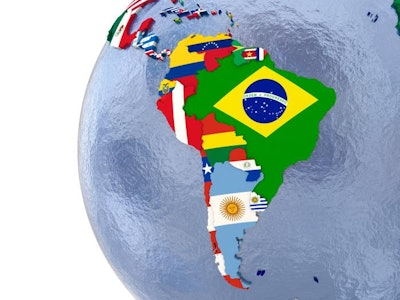
Brazil and Mexico are the two largest poultry industries in Latin America. They have grown at the same time, more or less, but under different conditions. Brazil is a large corn and soybean producer and exporter that relies on its own resources. Mexico, a net importer of those raw materials relies on the U.S., with a privileged position compared to other countries.
Brazil has grown enormously to become the largest chicken exporter in the world but also exports eggs and genetic material. So far this year, exports are doing really well. Its chicken per capita consumption is pretty high, above 45 kg, whereas egg consumption still has room to grow, with 251 eggs per person. Brazil has never reported avian flu.
Mexico relies on domestic consumption. Few exports have been reported to countries like Cuba, Angola and Canada. Chicken per capita consumption is at around 33 kg, which shows some room to grow. Egg consumption is at the highest rate, at 377 eggs per person. Mexico has reported avian flu.
Rabobank just published its Global Poultry Quarterly Q2 2022 report. The renowned bank has said that Brazil is doing very well in exports, both in quantity and revenue and that “the war in Ukraine should also open up opportunities for Brazilian chicken.”
On the other hand, Mexico’s poultry industry has been doing well but below earlier expectations. Inflation is affecting consumer purchasing power. “Demand is likely to remain constrained until economic conditions improve.”
Up to here, despite both countries being in Latin America, everything seems to be divergent. But there is one thing in common. Mexico imports Brazilian chicken. Imports have been growing for the last few years. For instance, the Brazilian Association of Animal Protein (ABPA) reported total exports in February 2022 of 374,500 MT. Of those, “only” 5.2% was imported by Mexico, that is, 19,600 MT, but this amount represents a 358.3% increase compared to the same period last year.
What do you think?


















